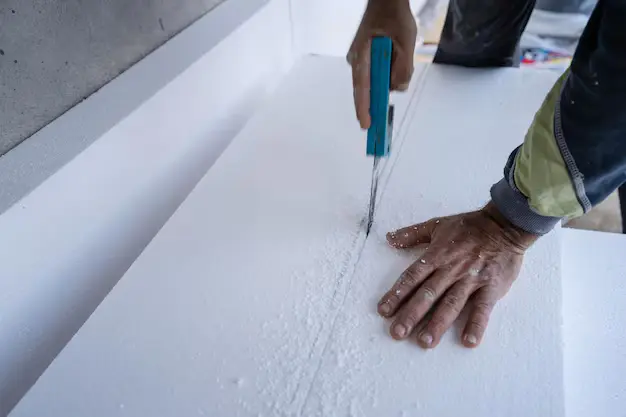Cutting drywall may seem like a straightforward task, but doing it correctly makes a huge difference in how your walls look and how fast the rest of your project moves. Whether you’re installing new panels, creating space for an outlet, or patching a hole, this guide will walk you through the process step-by-step using simple tools and smart techniques.
Drywall is a standard material in most homes. It’s lightweight, easy to install, and just as easy to damage if you’re not careful. Learning the right way to cut it ensures your edges are clean, your walls are solid, and you don’t waste material.
Why Knowing How to Cut Drywall Matters?
Cutting drywall the wrong way can lead to jagged edges, cracks in the panel, or worse—damaging hidden electrical wires or plumbing. It also slows down the installation process and leaves you with gaps that are harder to tape and finish. Proper technique helps you save time, reduce dust, and achieve a more professional-looking result, even if you’re not a pro.
What You’ll Need Before You Start?
Before diving in, it’s important to gather the right tools. For most jobs, you’ll need:
- A sharp utility knife
- A drywall T-square or straightedge
- A pencil
- A drywall saw or jab saw
- An oscillating tool or rotary saw (for precise cuts)
- Safety glasses and a dust mask
While some tools like rotary saws make quick work of tricky cuts, a utility knife and a jab saw are often enough for basic jobs.
Standard Process How to Cut Drywall
1. Mark the Area You Want to Cut
Use a pencil and a drywall square to mark your cutting line. Be accurate—especially if you’re making a hole for an electrical outlet or a pipe. Even a small misalignment can cause installation issues later.
2. Score the Front Side
Using a sharp utility knife, score along your line on the front (white) side of the drywall. You don’t need to cut all the way through—just slice deep enough to penetrate the paper layer.
3. Snap the Sheet
After scoring, hold the panel upright and gently bend it backward along the scored line. The gypsum core should snap cleanly in half. Now use your knife to cut the back paper layer and fully separate the pieces.
4. Smooth the Edges
Once your drywall is cut, use a drywall rasp or a piece of sandpaper to smooth out any rough edges. This will help the panels fit together tightly and make taping easier.
5. Cut Holes or Openings (Outlets, Pipes)
For holes in the middle of a drywall panel, you’ll need more than a knife. Use a jab saw to carefully carve out the marked area, or use an oscillating tool or rotary saw for cleaner, more accurate cuts.
Make sure you check behind the wall before cutting. Use a stud finder or magnet to avoid hitting wires, studs, or pipes. Cutting blind is one of the most common mistakes homeowners make when working with drywall.
Different Tools for Different Cuts
Not every job calls for the same tool. Here’s how to choose:
- Utility Knife
- Jab Saw
- Oscillating Tool
- Rotary Tool (RotoZip)
Choosing the right tool helps prevent mess and saves you from redoing sloppy cuts.
Your Safety is The Most Important Thing
Cutting drywall creates dust and debris. Always wear safety glasses to protect your eyes and a dust mask to avoid inhaling gypsum particles. Work in a well-ventilated area or use a shop vacuum with a dust collector if you’re making a lot of cuts.
How to Cut Drywall Without Making a Mess?
One of the top concerns for homeowners is drywall dust. It’s fine, it spreads fast, and it lingers in the air. If you want to reduce the mess:
- Use a utility knife and score method—it produces less dust than saws.
- If you’re using a power tool, connect it to a dust extractor or vacuum.
- Wetting the drywall slightly before cutting can reduce airborne dust, though it’s not always practical.
It is also recommended to consult with a professional drywall estimator and a construction expert to get maximum results and to avoid mess.
FAQs About Cutting Drywall
Can I use a circular saw to cut drywall?
Technically yes, but it creates a ton of dust and can damage the panel’s surface. It’s not recommended unless paired with dust control.
How do I cut drywall to fit around outlets or light switches?
Use a rotary tool or jab saw for precision. Mark the box dimensions on the panel before cutting.
What’s the best way to cut large sheets?
Use a utility knife to score and snap the sheet. For long, straight lines, a track saw with a dust collector works well but isn’t necessary for most home jobs.
Can I reuse drywall that’s already been cut?
Yes, if the piece is still solid and has no major cracks. Just be sure the edges are smooth before reuse.
Cutting drywall doesn’t require fancy tools or years of experience—just some preparation and the right approach. From scoring and snapping full sheets to cutting out small openings for outlets, learning how to do it properly can save you both time and headaches. With clean cuts, your finishing work becomes easier, and your walls look smoother. Whether you’re working on a full remodel or a small repair, knowing how to cut drywall the right way is a valuable skill in any homeowner’s toolkit.
If you’re managing a construction or remodeling job that involves installing drywall on a larger scale, accuracy is everything. That’s where Bidxol comes in. They offer construction estimation services across the U.S., helping contractors and property owners stay on budget and on time.
Need help figuring out how much drywall you’ll need, how long it will take, and what it will cost? Visit Bidxol’s Drywall Estimating Services to get professional support from experts who understand the construction process inside out.

